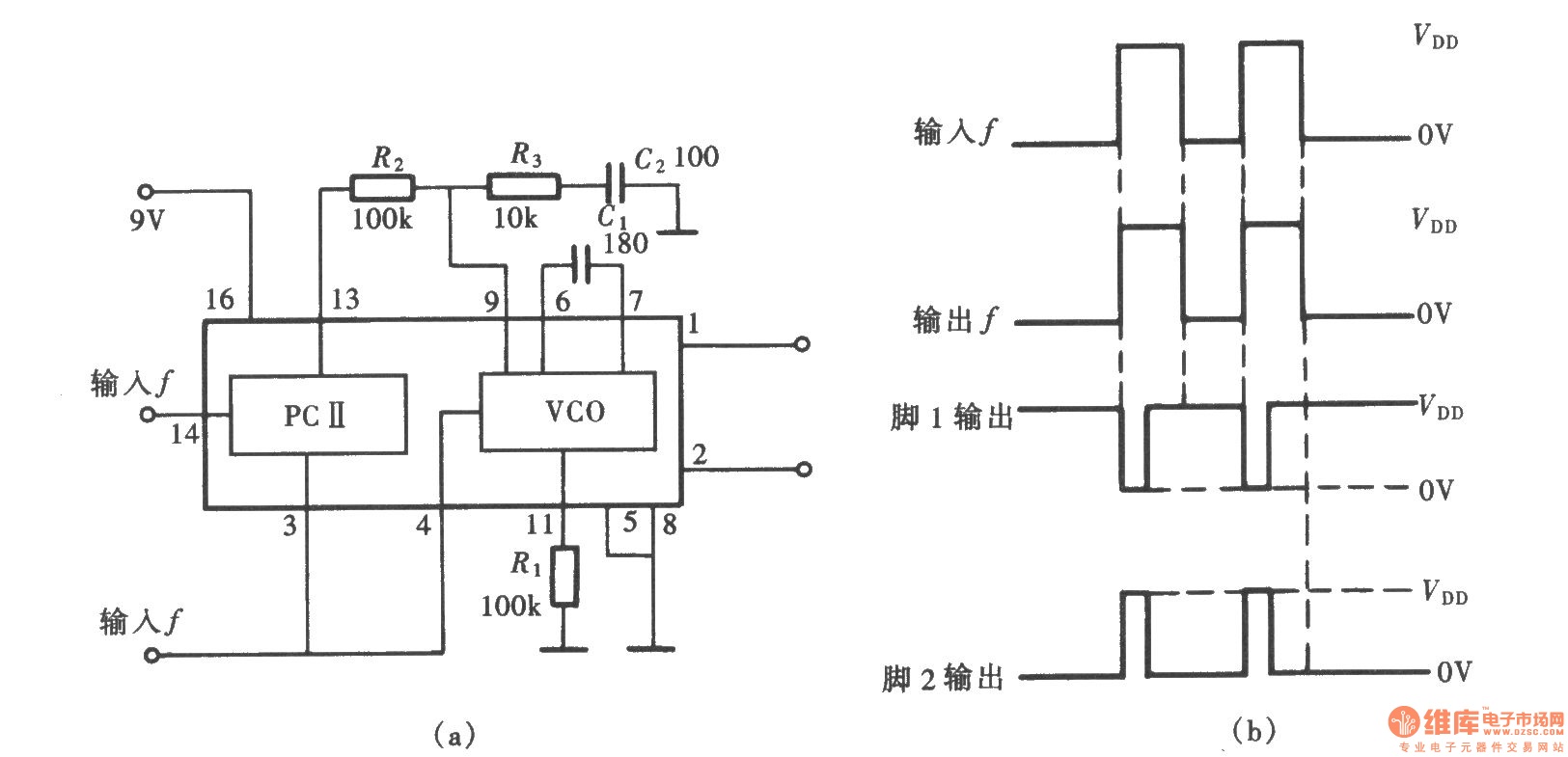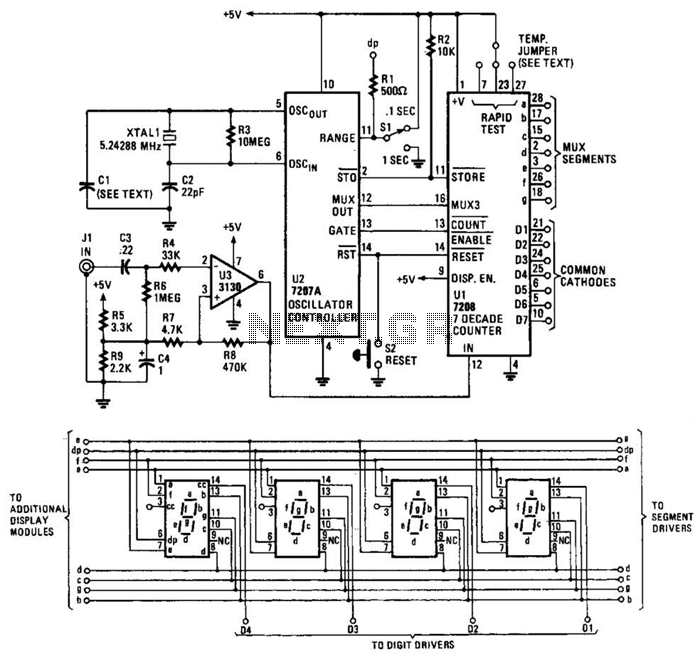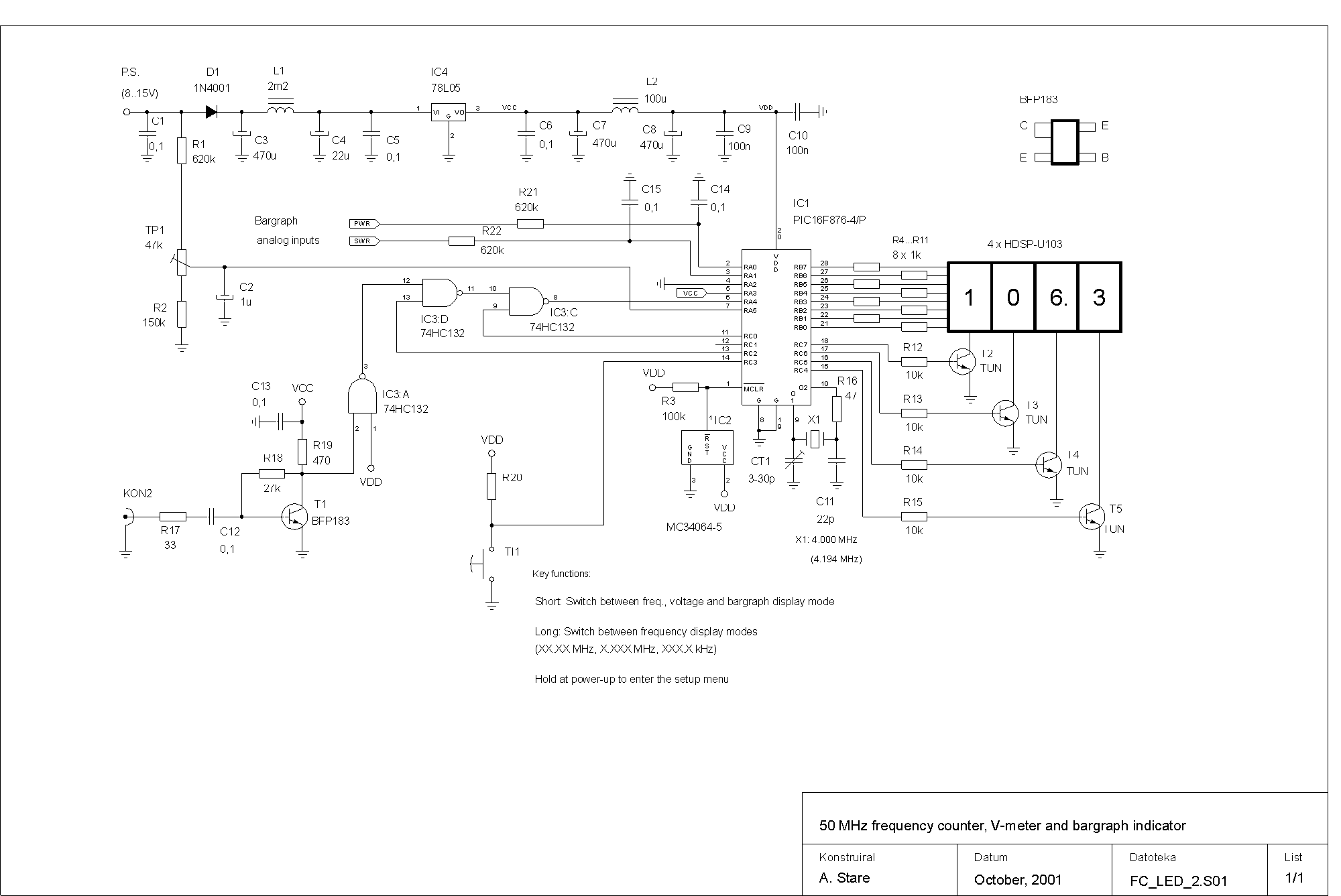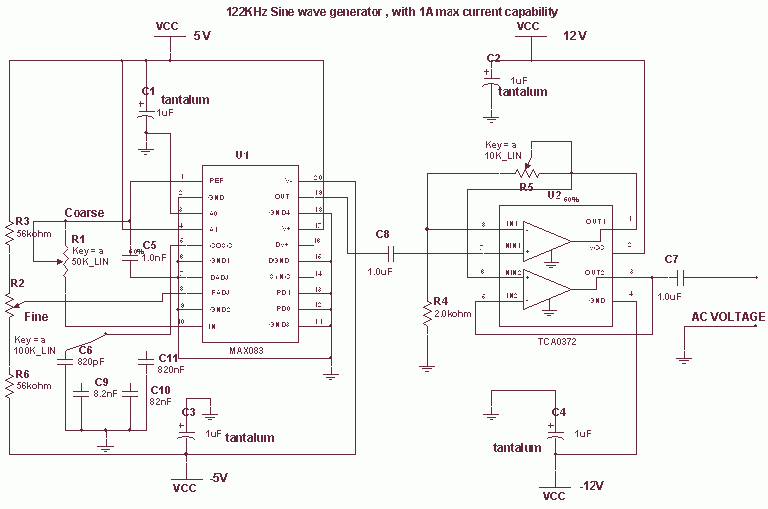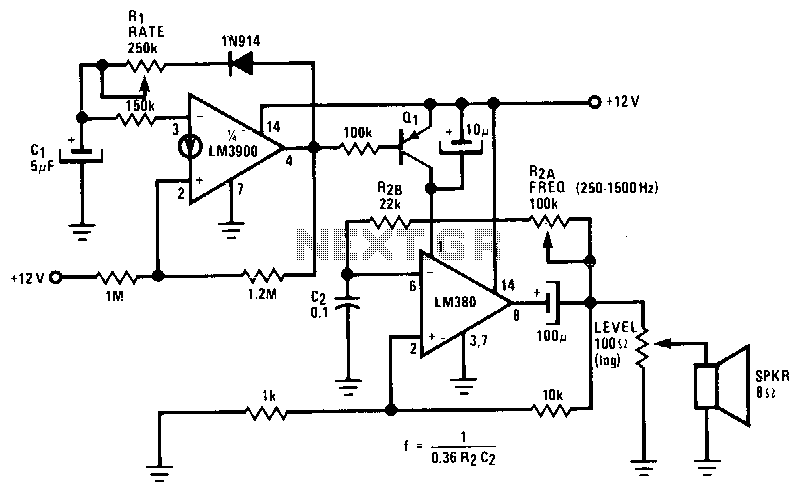
Dynamo Frequency Monitor
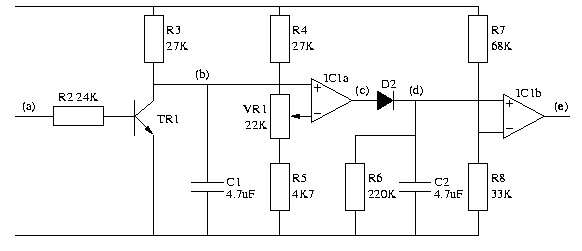
IC1 is a dual operational amplifier. In this circuit, each op-amp functions as a voltage comparator. When the voltage at the positive input exceeds the voltage at the negative input, the output transitions to a high state. Conversely, when the voltage at the positive input is lower than that at the negative input, the output transitions to a low state. The 8-pin package contains two of these comparators, designated as IC1a and IC1b. IC1a compares the voltage across capacitor C1 (designated as b) against a reference voltage provided by the potentiometer VR1 and resistors R4 and R5. The circuit is designed such that when the dynamo output falls below a critical frequency, capacitor C1 charges sufficiently so that for a portion of the time, voltage (b) exceeds the reference voltage, resulting in pulses at the output of IC1a (denoted as c). Conversely, when the frequency surpasses the critical threshold, voltage (b) does not exceed the reference voltage, causing output (c) to remain low. When output (c) is high, capacitor C2 is charged through diode D2. When output (c) is low, capacitor C2 discharges slowly through resistor R6. The voltage across capacitor C2 (denoted as d) is compared against a reference voltage established by resistors R7 and R8 by IC1b. When the dynamo frequency is low and capacitor C2 is periodically charged, voltage (d) will exceed the threshold, resulting in a high output from IC1b (denoted as e). Conversely, when the dynamo frequency is high and capacitor C2 is not charged, voltage (d) will fall below the threshold, causing output (e) to be low. This output is utilized to switch between the battery and the dynamo. It is noteworthy that when selecting an operational amplifier, it is crucial to choose one designed for single-rail operation, as other devices may not drive their output to 0V. A suitable choice is the CA3240E. A ZTX300 is specified for use as transistor TR1.
IC1 serves as the core component of a voltage comparison circuit, leveraging the characteristics of dual operational amplifiers to monitor voltage levels and dynamically control the charging of capacitors based on the frequency of the dynamo output. The operational amplifiers are configured in a comparator mode, which is essential for detecting when the input voltage crosses a specified reference level.
The first comparator, IC1a, plays a vital role in monitoring the charging state of capacitor C1. The reference voltage for this comparator is adjustable via potentiometer VR1, allowing for calibration to specific operational conditions. Resistors R4 and R5 form a voltage divider, ensuring that the reference voltage remains stable and suitable for comparison with the voltage across C1.
The output of IC1a (c) is crucial for determining the charging state of capacitor C2. When the output is high, indicating that the frequency is below the critical threshold, C2 receives charge through the forward-biased diode D2. The slow discharge of C2 through resistor R6 when the output is low ensures that the voltage across C2 (d) gradually decreases, providing a time-dependent response which is critical for the operation of the second comparator, IC1b.
IC1b compares the voltage across C2 against a set threshold defined by resistors R7 and R8. This comparison allows the circuit to determine whether to switch the power source from the dynamo to the battery, ensuring that the system can operate efficiently based on the dynamo’s performance.
The choice of operational amplifiers, such as the CA3240E, is pivotal due to their ability to operate effectively in single-rail configurations, ensuring that the output can reach ground level, which is necessary for the intended application. The use of a transistor like the ZTX300 for TR1 provides the necessary switching capability to manage the power sources effectively, enhancing the circuit's reliability and efficiency.
Overall, this circuit exemplifies a robust design that integrates voltage comparison, dynamic charging, and power management, making it suitable for applications that require efficient energy utilization from variable sources such as dynamos.IC1 is a dual operational amplifier. In this circuit each op-amp is used simply as a voltage comparator. When the voltage at the + input is higher than the voltage at the - input, the output goes high. When the voltage at the + input is lower than the voltage at the - input, the output goes low. The 8-pin package contains two of these comparators, IC1a and IC1b. IC1a is used to compare the voltage on C1 (b) against a reference voltage provided by the potentiometer VR1 and resistors R4 and R5. The idea is that when the dynamo output is below the critical frequency, C1 charges for long enough that for some of the time (b) is greater than the reference voltage, producing pulses on the output of IC1a (c).
On the other hand, when the frequency is above the critical frequency, (b) never exceeds the reference voltage, so (c) is always low. When (c) is high, C2 is charged through D2. When (c) is low, C2 slowly discharges through R6. The voltage on C2 (d) is compared against a reference voltage provided by R7 and R8 by IC1b. When the dynamo frequency is low and C2 is being periodically charged, (d) will be above the threshold and the output of IC1b (e) will be high.
When the dynamo frequency is high and C2 is not being charged, (d) will be below the threshold and the output of IC1b (e) will be high. This output is used to switch between the battery and the dynamo. Note: When selecting an operational amplifier, it is important to choose one that is designed for single-rail operation.
Other devices will not drive their output to 0v. One suitable device is the CA3240E. I used a ZTX300 as TR1. 🔗 External reference
IC1 serves as the core component of a voltage comparison circuit, leveraging the characteristics of dual operational amplifiers to monitor voltage levels and dynamically control the charging of capacitors based on the frequency of the dynamo output. The operational amplifiers are configured in a comparator mode, which is essential for detecting when the input voltage crosses a specified reference level.
The first comparator, IC1a, plays a vital role in monitoring the charging state of capacitor C1. The reference voltage for this comparator is adjustable via potentiometer VR1, allowing for calibration to specific operational conditions. Resistors R4 and R5 form a voltage divider, ensuring that the reference voltage remains stable and suitable for comparison with the voltage across C1.
The output of IC1a (c) is crucial for determining the charging state of capacitor C2. When the output is high, indicating that the frequency is below the critical threshold, C2 receives charge through the forward-biased diode D2. The slow discharge of C2 through resistor R6 when the output is low ensures that the voltage across C2 (d) gradually decreases, providing a time-dependent response which is critical for the operation of the second comparator, IC1b.
IC1b compares the voltage across C2 against a set threshold defined by resistors R7 and R8. This comparison allows the circuit to determine whether to switch the power source from the dynamo to the battery, ensuring that the system can operate efficiently based on the dynamo’s performance.
The choice of operational amplifiers, such as the CA3240E, is pivotal due to their ability to operate effectively in single-rail configurations, ensuring that the output can reach ground level, which is necessary for the intended application. The use of a transistor like the ZTX300 for TR1 provides the necessary switching capability to manage the power sources effectively, enhancing the circuit's reliability and efficiency.
Overall, this circuit exemplifies a robust design that integrates voltage comparison, dynamic charging, and power management, making it suitable for applications that require efficient energy utilization from variable sources such as dynamos.IC1 is a dual operational amplifier. In this circuit each op-amp is used simply as a voltage comparator. When the voltage at the + input is higher than the voltage at the - input, the output goes high. When the voltage at the + input is lower than the voltage at the - input, the output goes low. The 8-pin package contains two of these comparators, IC1a and IC1b. IC1a is used to compare the voltage on C1 (b) against a reference voltage provided by the potentiometer VR1 and resistors R4 and R5. The idea is that when the dynamo output is below the critical frequency, C1 charges for long enough that for some of the time (b) is greater than the reference voltage, producing pulses on the output of IC1a (c).
On the other hand, when the frequency is above the critical frequency, (b) never exceeds the reference voltage, so (c) is always low. When (c) is high, C2 is charged through D2. When (c) is low, C2 slowly discharges through R6. The voltage on C2 (d) is compared against a reference voltage provided by R7 and R8 by IC1b. When the dynamo frequency is low and C2 is being periodically charged, (d) will be above the threshold and the output of IC1b (e) will be high.
When the dynamo frequency is high and C2 is not being charged, (d) will be below the threshold and the output of IC1b (e) will be high. This output is used to switch between the battery and the dynamo. Note: When selecting an operational amplifier, it is important to choose one that is designed for single-rail operation.
Other devices will not drive their output to 0v. One suitable device is the CA3240E. I used a ZTX300 as TR1. 🔗 External reference

